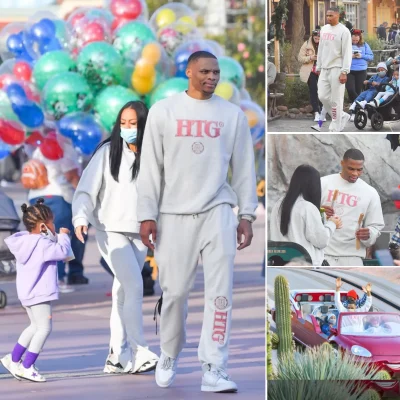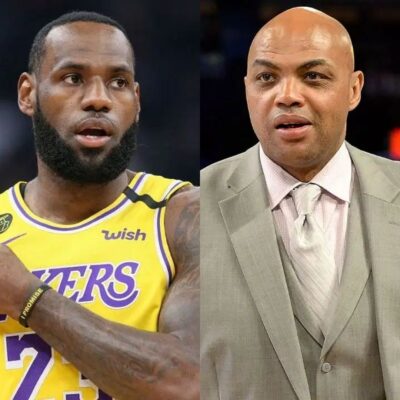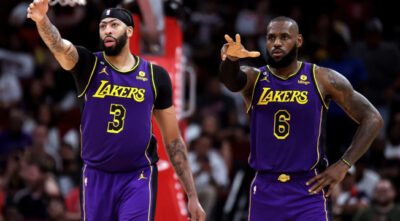
Lionel Messi: The evolution of the greatest footballer of all time
John Muller
Jul 19, 2023
The way his first coach tells the story, the kid wasn’t even supposed to be on the pitch. It was his older brother’s game. They were a player short. Salvador Aparicio looked over at the stands and saw a small boy playing by himself, in private communion with the ball. When he asked his mother if he could borrow him, she said he didn’t know how to play football.
ADVERTISEMENT
The first time the game came his way, sure enough, the kid stood stock still and watched the ball roll by. Moms make the best scouts. But the second time — Aparicio remembered this many years later — the ball hit his left leg and something happened. Picture lightning shooting up a tiny spinal column, if you want. Unplumbed regions of the brain glittering like fireworks in the dark. Choirs of angels cranking a heavenly spotlight to shine on this one particular patch of dirt in a working-class neighbourhood in Rosario, Argentina. Whatever makes it make sense to you: the gift was just there.
“He controlled the ball and took off diagonally across the middle of the pitch, dribbling,” said Aparicio. “He dribbled past anyone in his path.”
There’s a video of the coach telling this story as an old man, fluttering his hand like a fish whipping through water. Then he stops talking and pulls a face that can only be described as a kind of shrug, as though even at the end of his life he was still struggling to accept the cosmic logic of what came next.
“I was screaming, ‘Shoot! Shoot!’” Aparicio said. “But he couldn’t do it. He was too small.”
The greatest player ever to kick a ball wasn’t ready to do the thing he was put on this Earth to do. The gift was there even before his left foot was.

The Dribbling Winger
Next time you’ve got a minute to reconsider whether you’ve ever truly been good at anything, pull up some blurry youth academy footage from Messi’s hometown club, Newell’s Old Boys. Watch a skinny eight-year-old with short sleeves down to his elbows take off dribbling and you’ll know right away who it is.
It’s not just that he blows through four or five opponents straight from kick-off. It’s the quick, choppy steps, the light kiss of the ball with the outside of his left boot to send a defender sprawling in the dirt before skipping around him. He’s running at the speed of the ball, letting it roll under his body so that every little half-stride is a threat to slice sideways or burst forward. The style is unmistakable.
Even back then, he refused to go down. Most dribblers will stop and start, lean, lunge, twist, turn and, sooner or later, get knocked off balance. The better the dribbler, the more risks they take in tight spaces; the greater the risk, the harder defenders punish them for it. Messi just kept running. He stayed low to the ground, using those quick little steps for control and windmilling his forearms for balance. By age 12, he was dragging would-be tacklers behind him like an NFL running back.

You know who else dribbled like that? Diego Armando Maradona, the manic Argentine god of football mischief, the most beloved player ever to wear his country’s blue and white. Off the pitch, the shy kid from Rosario couldn’t have been more different from the brash Buenos Aires idol, but on it their similarities were uncanny: two short, sturdy, left-footed dribblers with shaggy hair and the same driving style, the delicate close control, slaloming through thickets of violence to create impossible goals.
In the 1986 World Cup quarter-finals against England, the year before Messi was born, Maradona scored a goal that’s widely considered the best ever. He picked up the ball in Argentina’s own half, just outside the centre circle, and finished some 70 yards and five humiliated opponents later when he rounded the goalkeeper and tapped the ball into the open net. Any football fan can close their eyes and run the tape: the spin move, the long dash, the weaving in and out, the shot a split-second before his legs were swept out from under him. A fever dream of a goal. Nobody had seen anything like it.
And then, improbably, everyone did. In the spring of 2007, Messi — still a teenager but already a star, enjoying a breakout season with Barcelona — pulled off a goal against Getafe that felt like a shot-for-shot remake of the Maradona original. He eviscerated two defenders in his own half. Took off at a dead sprint without ever losing control of the ball. Cut inside, swerved outside, rounded the ’keeper, the whole shebang. Imagine picking up a paintbrush one weekend and accidentally recreating the ceiling of the Sistine Chapel.
Aparicio, the youth coach who once borrowed a boy from the stands and witnessed his first miraculous dribble, watched him come of age on TV. “The other day I saw him score this goal — they say it was like Maradona,” he told an interviewer. “I think he is better.”
He looked away for a moment and his voice started to quaver: “When I watch him play like that, I cry. You understand?”.

The False Nine
Some players are born to score goals. Others set them up. Most play further back, passing and moving to help get their team upfield. Every once in a while you’ll see a prodigy who can do it all, dreaming up attacking moves they are good enough to construct and finish themselves. Check the back of that player’s shirt and chances are they’ll be wearing the No 10.
Back when football squad numbers were first assigned by position, the No 10 belonged to the inside left forward — the natural slot for a right-footed playmaker. Formations evolved over decades, but the No 10’s role stayed more or less the same: he worked behind the striker, between the opponent’s lines, creating and scoring in the most crowded part of the pitch. Due to the sheer difficulty of the job, the shirt itself came to be a sort of honour. Pele wore it by accident, after Brazil forgot to assign kits at the 1958 World Cup, but he helped seal the No 10’s association with greatness. Maradona, with Argentina, refused to wear anything else.
Messi didn’t get the No 10 when he joined Barcelona. That belonged to the reigning best player on the planet, Ronaldinho, a Brazilian playmaker who lined up as a winger but led the attack with so much verve and imagination that it would have felt wrong to see the shirt on anyone else. The teenage Messi’s job was to be a dribbling, goalscoring gremlin on the opposite wing, the electric guitar punctuating Ronaldinho’s lead vocals. His first professional goal came from an ingenious Ronaldinho scoop over the back line that Messi brought down in the box, then lobbed over the goalkeeper’s head to complete a double rainbow.
In 2008, the summer Messi turned 21, Ronaldinho left Barcelona and a new coach named Pep Guardiola gave the No 10 shirt to his young right winger. It was a turning point in Messi’s career. Otherworldly highlights wouldn’t be enough anymore — he needed to be the star around whom the whole system would spin.

At first, Messi interpreted the playmaker role as the wing-like Ronaldinho did, cutting inside behind the centre-forward Samuel Eto’o to undo defences. He had a stellar first season under Guardiola, scoring and assisting more goals than all but two players in Europe’s top five leagues — and one of those two was Eto’o, enjoying a career year thanks to Messi’s largesse.
But in May 2009, the night before Barca travelled to Madrid for El Clasico, football’s biggest rivalry, Guardiola decided to change things up.
Messi and Eto’o were told to start in their regular positions, but eight minutes into the game they would switch places: the centre-forward out wide to the right, the playmaker into the middle. The idea was to scramble Real Madrid’s central defenders, who couldn’t just sit deep to protect the goal but would now have to decide when to follow Messi into midfield. This unusual attacking role — neither a traditional No 9 in the box nor a No 10 behind a striker — was known as a “false nine”.

The gambit worked better than anyone could have hoped.
Messi assisted Barcelona’s first goal in that Clasico by luring a centre-back out of the back line and shovelling a pass to Thierry Henry in the space behind him. He scored two more himself and generally terrorised the Madrid defence up the middle en route to a 6-2 win. Guardiola was so pleased that he tried the position swap again a few weeks later in the Champions League final against Manchester United, and Messi — the shortest player on the pitch — secured the trophy with a striker’s header in the box.
His false-nine era had begun.
As he gradually became a full-time centre-forward over the next few years, Messi went supernova. We’re talking absolutely bonkers. In the first eight decades of La Liga to that point, its record for goals scored in a season was 38, shared by Telmo Zarra in 1950 and Hugo Sanchez in 1990. From 2009 to 2013, Messi averaged — averaged! — more than 40 league goals per season, peaking at 50 in 2011-12, while at the same time assisting the second-most goals in the top five European leagues. He won the Ballon d’Or, the award for the best player in the world, four years running.
After taking home every trophy they competed for in 2008-09, Barcelona won La Liga three out of the next four seasons, topping things off with another Champions League in 2011. Sir Alex Ferguson, the legendary Manchester United manager unlucky enough to go up against Barca in both those Champions League finals, called them the best side he’d ever faced.
The secret to all this success was that Messi was holding down two jobs at once. Barcelona’s “tiki-taka” possession game was led by a telepathic midfield trio — Xavi, Andres Iniesta and Sergio Busquets — who had been practising the same pass-and-move principles since childhood in the club’s academy. When Messi dropped off the front line, he made a natural fourth midfielder at the tip of a diamond, just as intuitive as the other three at pinging short passes around in tight spaces. Together, these four outnumbered and outclassed opposing midfields, passing their way straight up the heart of the pitch and swarming to recover lost balls so quickly that it felt like the other team were just there to watch.
The reason most teams don’t use their centre-forward as a spare midfielder, of course, is that they need them to be in the box, scoring goals. Messi’s genius was that he could do both. He played like a midfielder in the build-up, accounting for eight per cent of Barcelona’s pass attempts in open play, but somehow always found a way to finish moves around the penalty spot, scoring up to 50 per cent of the team’s open-play goals at his false-nine peak.
He scored every way you can imagine, plus a few you probably couldn’t, but two finishes in particular became signatures during Messi’s false-nine years. One was the running chip, which usually happened when he dropped off and centre-backs pushed up behind him, leaving naked grass in front of goal. One way or another — sometimes on the dribble, sometimes running in behind for a through-ball — Messi would break free and run right up to the goalkeeper, waiting for him to get low to try to smother the ball before flipping it insouciantly over his head and running off with two fingers pointed to the sky.

Messi chips Arsenal goalkeeper Manuel Almunia in a Champions League game in 2010 (Photo: Adrian Dennis/AFP via Getty Images)
His other favourite kind of shot, carving through the middle with a one-two, was the purest expression of what a false nine could be.
These moves started in midfield, where he would swap a pass or two and turn to dribble at the defence. That got people’s attention. When someone stepped out to stop him, it would open a lane for Messi to play a pass. Then, suddenly, he would vanish. This part is a little hard to explain. For a second or two after he released the ball, everyone would lose track of the best player on the pitch, and the next thing you knew he had teleported into the box to collect the return pass and score.
How did he keep pulling it off? It didn’t hurt that the team-mates he played those one-twos with were very good themselves. A line-breaking pass to a player like that has a way of causing panic, like a shoe on an anthill. But the main thing was that Messi was always arriving in space, not occupying it. His wandering meant nobody could be quite sure who was responsible for him, and the moment defenders turned their head to follow a pass he would dart into somebody else’s zone and get the ball back before they even knew he was there.

Like most magic, Messi’s game worked by simple misdirection. He was a playmaking No 10. He passed. You looked away. Abracadabra, he was a goalscoring No 9. “Don’t write about him, don’t try to describe him,” Guardiola once advised journalists. “Just watch him.”
His gift was that nobody could even do that.

The Wide Playmaker
Looking back, it’s fair to say nobody has had a bigger impact on Messi’s career — if not always in the way they might have hoped — than Neymar. The Brazilian phenom arrived at Barca in 2013 as his heir apparent, electric in much the same way the young winger Messi had been. His dribbling style was a little different (flashier, more delicate, more… Brazilian) but all the skills were there to become the world’s next great wide playmaker.
As scintillating as Neymar was, though, it didn’t suit false-nine Messi to have a ball-to-feet winger drifting in from the left, slowing down the game and crowding him in the middle. Their first season together was Messi’s worst in years: a mere 28 goals and 11 assists, the third-most in the top five leagues. So Barcelona went out and signed the guy with the most, Liverpool striker Luis Suarez, and Messi moved back to the right wing.
A Messi-Suarez-Neymar front line was hilariously unfair, like releasing hungry orcas in a fish farm. Barca swept to a second treble in 2014-15, playing looser, more direct football than in the tiki-taka days, letting their superstar front three run wild. Messi resumed regular service torching dudes from the wing. That spring, he scored two of his most famous goals a few weeks apart: the one in the Champions League where he turned Jerome Boateng, Bayern Munich’s best centre-back, into a puddle, and the marathon dribble in the Copa del Rey final where he made the entire left side of Athletic Bilbao’s defence disappear.
But even as Barcelona’s attack reached new heights, the ground was shifting beneath them in midfield.
Xavi, the team’s long-time orchestrator, left in 2015 at age 35, and Iniesta followed him out the door three years later, aged 34. They were replaced by athletic midfielders whose job was more manual labour than art, doing Messi’s running and defending for him while he took on more and more responsibility as the team’s creative focal point.
Grown-up wide playmaker Messi wasn’t like his chaotic young winger self. He was becoming more orderly with age — more predictable, really, but in some ways more dangerous. You know that Bruce Lee line about fearing the man who’s practised 10,000 kicks less than the one who’s practised one kick 10,000 times? This was kung fu master Messi, distilling his game to moves he had perfected.

He would receive the ball on the right, sometimes all the way out on the sideline, where he could start the attack in space, facing play. He would dribble. He would cut inside. Everyone in the stadium knew the cut was coming, but his timing was so sharp that the only way to stop it would have been to defend at his nine o’clock and leave a lane straight to goal.
So in he would go, angling across the back line, choosing from a menu of ways to break their hearts. The killer move was a quick one-two to shake loose and curl a shot from the top of the box. But if a centre-back stepped out to intercept him, he’d slip a little dagger to put Suarez in on goal or shovel a sideways pass to an open midfielder on the left.
One of his favourite plays was to draw the defence toward him before bending a left-footed diagonal over everyone’s heads into the path of a team-mate streaking in behind from the far wing. Left-back Jordi Alba became one of Barcelona’s assist leaders by learning to time his runs onto Messi diagonals and slide the ball to a runner in front of goal — often this was Messi himself, materialising at the other end of a long-distance one-two.

As Neymar developed into Messi’s not-quite mirror image on the left, he got tired of playing the protege. In 2017, he made a record-breaking move to Paris Saint-Germain, leaving Barcelona with a pile of money that they promptly squandered on expensive players who didn’t fit. For the next four years, while Messi aged into his thirties, their crumbling squad grew increasingly reliant on him to do everything — a condition Spanish media called “Messidependencia”.
To the extent that Barcelona’s attack still worked, it was because Messi could produce goals out of thin air. His quick feet and uncanny ability to read defenders’ movement allowed him to get shots off in situations where not many players could, but the shots were getting more difficult: further from goal, with more opponents packed in behind the ball. He kept scoring them anyway, winning the Pichichi trophy for the most goals in Spain every year from 2016 to 2021 and topping Europe in three of those five seasons.

Most elite scorers are volume shooters: although they’re extraordinarily good at getting on the end of high-quality chances, they tend to finish them at a fairly ordinary clip. Messi is very good at finding chances, but he’s a freak at converting them. He can pick his moment to catch the goalkeeper off guard and aim a hard, low shot precisely in either bottom corner, where it’s hardest to save. In the back half of his career, he’s become just as deadly at free kicks, which he likes to curl over the wall into the top-right corner.
According to Statsbomb’s expected goals model, he scored 44 per cent more goals over the course of his career in the top five leagues than an average shooter would have produced from the same chances — a virtually unimaginable stat.

During the Covid-19 pandemic, Barcelona’s spending spiral that started when Neymar left became a full-blown financial crisis that cut short Messi’s career at the only club he’d ever known. In 2021, he said an abrupt, teary goodbye and followed Neymar to Paris.
Though nobody had known it was anything historic at the time, his final goal for Barcelona had been a header against Celta Vigo that he placed neatly in the far bottom corner, out of the goalkeeper’s reach.

The Quarterback
The less said about Messi’s past two seasons playing in France the better, probably, except for this: he got really good at through balls.
Legs get heavy in your mid-thirties. Even though Messi still dribbles more and better than almost anyone in the world, his take-ons are short bursts to find space now, not a runaway train towards goal. As he has slowed down, he has learned to compensate by dropping deeper into midfield and scanning for runners in front of him, deploying his laser-guided left foot at range.

Luckily for quarterback Messi, PSG had Kylian Mbappe, his successor as the world’s best player, lined up at left wing — and he likes to run. Three seconds into one game last season, Messi took a ball from kick-off and launched it over Lille’s entire team into the path of Mbappe, who lobbed the goalkeeper on one bounce. They did stuff like that for fun. If any of PSG’s front three played any defence, they might have been a pretty decent team.
But Messi had nothing left to win at club level. What he wanted more than anything — what he had always wanted — was to win with Argentina, like Maradona had done. They came achingly close in 2014, losing to a Germany goal in the 113th minute of the World Cup final, but after years of disappointment it looked like Messi might never win an international trophy. Argentina’s talent had never quite fit together in a system and style that suited him.
Finally, in the twilight of his career as a midfield creator, the pieces clicked into place. In what are likely to be the last two international tournaments of his career, the 2021 Copa America and the 2022 World Cup, Argentina had an enforcer to protect him in right midfield, a passing pivot to get him the ball, young strikers in front of him and runners on the left. All Messi had to do was run the show — or, often, walk it.
For years, Messi had stuck out for the way he strolled around the pitch whenever he didn’t have the ball. Coaches explained that this wasn’t just laziness: he was conserving energy to dribble and score goals, sure, but he was also watching how the defence reacted as he wandered around. When the play moved away from him, Messi would shuffle behind, out of sight and mind, and arrive in the space where he wanted to be exactly when he needed to be there.
Maybe he had also been saving himself for the two best tournaments of his life. At the Copa America, a 34-year-old Messi conquered South America with the most goals, most assists, and second-most successful dribbles after Neymar, whose Brazil team Argentina beat in the final to win the first title of Messi’s senior international career.
Then, at the World Cup last winter, they did it again.
His performances in Qatar felt like a career retrospective, pulling together highlights from all the best versions of himself.
There was Messi the dribbler, carrying the ball from deep on the right sideline, not far from where Maradona once took off against England, all the way to the six-yard box for an outlandish assist, beating the young Croatia centre-back Josko Gvardiol at every touch and turn; Messi the false nine, swapping short, quick passes to break through the middle of France’s defence and score in extra time of the final; the wide playmaker, cutting inside to curl the ball into Australia’s net or placing a perfect shot into the corner against Mexico; the quarterback, dribbling across the Netherlands’ midfield and slipping Nahuel Molina a through-ball at an angle no one else could have dreamed of, much less pulled off.
The final came down to penalties — the one part of Messi’s game that had always remained average, strangely human, like a vestigial reminder of the child who had once been too tiny to even shoot at goal. This time, he didn’t miss. He slid the ball into the bottom left corner, just beyond the diving Hugo Lloris’ fingertips, and a few minutes later Argentina were champions.
For a moment amid the celebration, Messi was a small boy again, hoisted on his team-mates’ shoulders, being paraded around the stadium with the World Cup trophy in his hand and pure childish delight on his face.
His gift was that, watching him, you couldn’t help but smile too.











